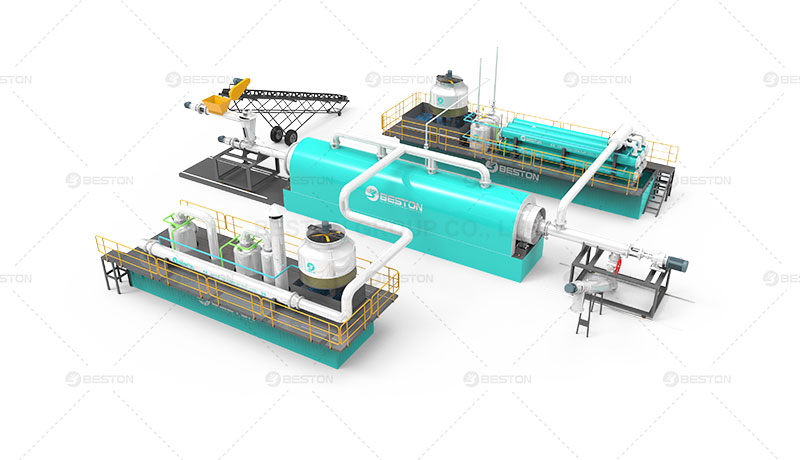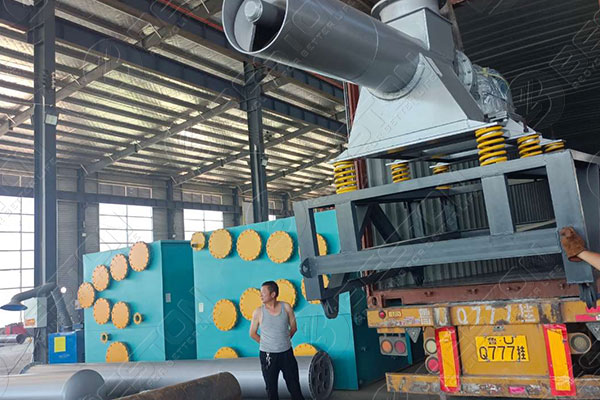It is a type of thermochemical reaction. It typically occurs under pressure and at temperatures above 430 °C (800 °F). Trading energy in the form of heat to break bonds in the feedstock material gasifies the feedstock to produce lighter molecules. The lighter molecules react with one another to create new, larger molecules. These steps happen consecutively as the temperature is increased until all possible reactions have occurred.
The solid residue that remains after pyrolysis is called char. Charcoal is an example of a solid product resulting from pyrolysis. Liquid residues that remain after pyrolysis are called oils. Gases that rise from the solid and liquid residues during pyrolysis are known as off-gases. These gases can be utilized as a fuel for powering the pyrolysis process(planta de pirolisis), or they may need to be treated before being released into the atmosphere.

BLL-20 Planta de Pirólisis Continuo Beston Group
Feedstock material used in a pyrolysis plant in Mexico
There are a number of different feedstock materials that can be used in a pyrolysis plant(planta pirolisis llantas) in Mexico. The most common feedstock material is paper, which can be easily broken down into pulp and used to fuel the pyrolysis process. Other common feedstock materials include plastics, rubber, and textiles. These materials can be recycled and reused to create new products, making them an environmentally friendly option for pyrolysis. In addition, using recycled feedstock materials can help to reduce the overall cost of operating a pyrolysis plant.
How does the plant work?
The process begins by feeding the waste material into a large chamber, where it is heated to temperatures of over 1,000 degrees Fahrenheit. This causes the waste to break down into gaseous and liquid components. The gaseous components are then condensed and collected, while the liquid components are processed further to yield a variety of useful products, such as fuel oil and charcoal.
There are three main types of pyrolysis reactors(https://www.bestoneco.com/planta-de-pirolisis-de-plastico-y-llanta-en-mexico/) found in Mexico: fluidizer bed, rotary kiln, and reactor vessel. Each type has its own advantages and disadvantages. The most common reactor used in commercial plants is the rotary kiln reactor, due to its high efficiency and flexibility.

BLL-16 Planta de Pirólisis de Lodos
Pyrolysis plants in Mexico(beston group) are important because they recycle plastic waste and turn it into fuel. This fuel can be used to generate electricity, which reduces the reliance on fossil fuels. These plants also reduce the amount of plastic in landfills and oceans in Mexico, which help protect the environment. Investing in a pyrolysis plant can be beneficial in Mexico, especially because the country wants to reduce and reuse its waste materials. Therefore, you have a good business proposition that can provide a handsome amount of profit every year.